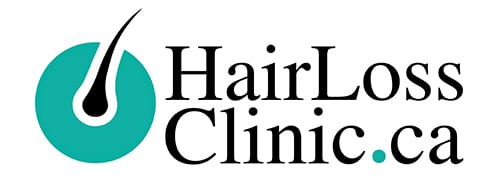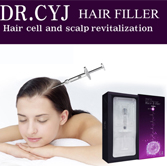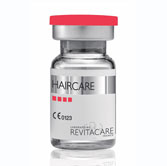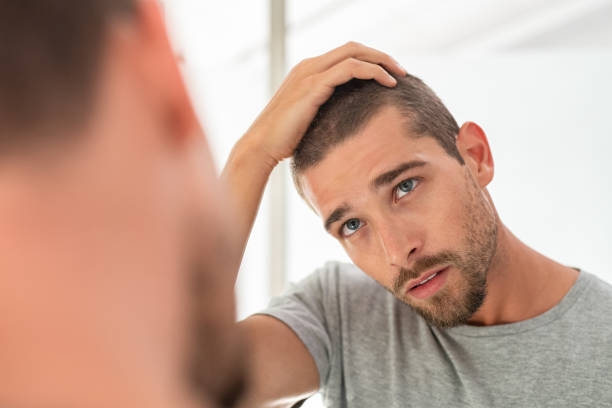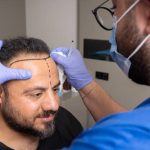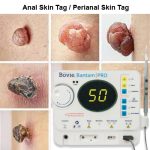September 4, 2023 By simonw Comments are Off
Table of Contents
Hair Loss Treatment: Understanding Causes, Diagnosis, and Treatment Options
Introduction
Hair loss, a condition affecting millions of individuals worldwide, can significantly impact one’s self-image and confidence. Whether you’re a man or a woman, experiencing hair loss can be distressing, prompting questions about its causes, diagnosis, and treatment options. Within this all-encompassing guide, we shall explore the complexities surrounding hair loss, delving into its diverse manifestations, underlying factors, diagnostic methodologies, and hair loss treatment options. By comprehending the fundamental origins of hair loss and examining efficacious remedies, you can empower yourself with the knowledge to make well-informed choices in effectively addressing this prevalent concern.
Understanding Hair Loss
Hair loss, or alopecia, refers to the gradual thinning of hair or the development of bald spots on the scalp. Hair loss can occur in different ways, including gradual thinning all over the head, bald spots, or significant hair shedding. The hair follicles, tiny openings in the skin, produce hair shafts that grow from the scalp. Hair loss transpires when the hair follicles gradually diminish in size, leading to the emergence of hair strands that are finer and shorter. Male or female pattern baldness, medically termed androgenetic alopecia, is the predominant type of hair loss. Nevertheless, hair loss can be attributed to various factors, including genetics and medical conditions.
Common Causes of Hair Loss
Hair loss can be linked to various factors, encompassing genetics, medical conditions, shifts in hormonal levels, and specific medications.
Genetic factors play a notable role in male and female pattern baldness. Hormonal fluctuations due to occurrences like pregnancy, childbirth, menopause, and thyroid-related problems can also play a role in hair loss. Certain medical conditions, such as alopecia areata—an autoimmune disorder causing bald patches—and tinea capitis—a fungal infection of the scalp—can result in conspicuous hair loss. Additionally, specific medications like chemotherapy drugs and oral finasteride—a prescription drug used for treating enlarged prostate and hair loss—can bring about hair loss as an unintended consequence.

Diagnosis of Hair Loss
If you’re experiencing noticeable hair loss, seeking the guidance of a medical professional is essential. Seeking the assistance of a dermatologist or healthcare professional allows for diagnosing your hair loss cause, involving a blend of physical assessment, review of medical history, and possibly blood tests. During your visit, the doctor may inquire about your family history of hair loss, recent illnesses, medications, and overall health. They may also perform a “pull test” to assess the number of hairs that come out when gently tugged. In certain instances, more advanced diagnostic methods like scalp biopsy or trichoscopy might be suggested to identify the precise reason behind your hair loss.
An Overview of Hair Loss Treatment Options
The effectiveness of hair loss treatments can differ depending on the root cause and the individual’s particular pattern of hair loss. Now, let’s delve into several prevalent hair loss treatment choices available.
Treatments for Male Pattern Baldness:
- Minoxidil:Applying a topical minoxidil solution to the scalp can stimulate hair growth and decelerate the progression of hair loss.
- Oral finasteride: A prescription medication that helps reduce androgen levels and counteracts the effects of male pattern baldness.
- Hair transplant procedures: Surgical techniques like follicular unit transplantation involve transplanting hair follicles from one area of the scalp to balding areas.
- Scalp micropigmentation: non-surgical technique using tradition tattoo methods combined with specialized needles and pigment to replicate the look of hair follicles.
Treatments for Female Pattern Baldness:
- Topical minoxidil: Similar to its use in men, topical minoxidil can help stimulate hair growth in women.
- Hormonal therapy: Some women may benefit from hormonal therapies, such as birth control pills, to manage hair loss associated with hormonal imbalances.
Treatments for Alopecia Areata:
- Corticosteroid injections: It can be administered into the bald patches to stimulate hair regrowth.
- Immunotherapy: It involves applying a chemical irritant to the scalp to trigger an allergic reaction and stimulate hair growth.
- Support groups and counselling: For individuals struggling with the emotional impact of alopecia areata, joining a support group or seeking counselling can be beneficial.
The Role of Medication in Hair Loss Treatment
Medication plays a significant role in treating hair loss, especially conditions like androgenic alopecia, also known as male or female pattern baldness. Two primary medications have gained popularity for their effectiveness in managing hair loss: minoxidil and finasteride.
Minoxidil (Rogaine): How Does it Work?
The FDA has approved minoxidil, often called Rogaine, as a topical medication for hair loss. It can be purchased without a prescription, stimulating hair follicles and fostering growth. Minoxidil boosts blood circulation to hair follicles, prolonging the growth stage and potentially developing denser, lengthier hair strands. Despite not being entirely comprehended, minoxidil has demonstrated beneficial outcomes for individuals dealing with androgenic alopecia, regardless of gender.
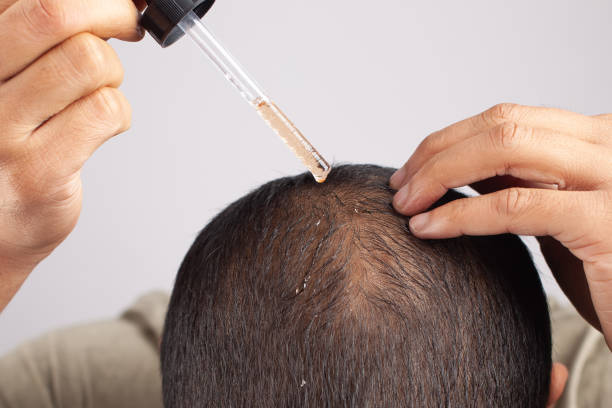
Finasteride (Propecia): Benefits and Side Effects
Finasteride, marketed as Propecia, is an oral prescription drug designed to lower dihydrotestosterone (DHT) levels, a hormone linked to hair loss. Finasteride helps slow hair thinning and promotes hair regrowth by inhibiting DHT production. It is particularly effective in treating male pattern hair loss. However, it’s important to note that finasteride may have side effects, including sexual dysfunction and decreased libido. Before starting finasteride, it is essential to consult a healthcare provider.
Surgical Hair Loss Treatment
For individuals seeking more permanent solutions, surgical interventions can restore lost hair. Here are some common surgical treatments for hair loss:
Hair Transplants: The Basics
Hair transplant techniques include removing viable hair follicles from regions with robust hair growth (typically the back or sides of the head) and their relocation to areas experiencing hair thinning or loss. Two primary approaches, follicular unit transplantation (FUT) and follicular unit extraction (FUE), are employed in hair transplantation. FUT entails removing a scalp strip and segmenting it into individual follicular units, while FUE directly extracts individual follicular units from the scalp.
Scalp Reduction Surgery: What You Need to Know
Scalp reduction surgery is a technique in which bald portions of the scalp are excised, and the adjacent hair-bearing skin is extended to bridge the gaps. This surgical method is less common due to advancements in hair transplant techniques, but it may still be considered in specific cases.
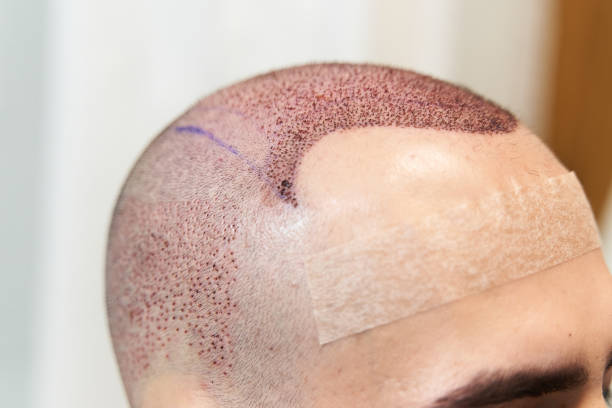
The Benefits and Drawbacks of Hair Plugs
Hair plugs, also known as hair grafts, were a popular hair restoration technique. This method involves transplanting small sections of the scalp containing hair follicles to areas with hair loss. While hair plugs can provide effective results, modern hair transplant techniques like FUT and FUE offer more natural-looking and evenly distributed hair growth.
Non-Surgical Hair Loss Treatment
Non-surgical treatments provide alternatives for individuals who prefer less invasive options. Here are a few non-surgical solutions for hair loss:
Laser Therapy: An Emerging Option for Hair Loss
Low-level laser therapy (LLLT) involves using laser devices or helmets to stimulate hair follicles and promote hair regrowth. While more research is needed to understand its effectiveness fully, some individuals have reported positive results with LLLT.
PRP: Hair Loss Treatment using Your Blood
Platelet-rich plasma (PRP) therapy involves:
- Drawing a small amount of blood from the patient.
- Processing it to concentrate the platelets.
- Injecting the platelet-rich solution into the scalp.
PRP comprises growth factors that have the potential to activate hair follicles and promote the growth of hair.
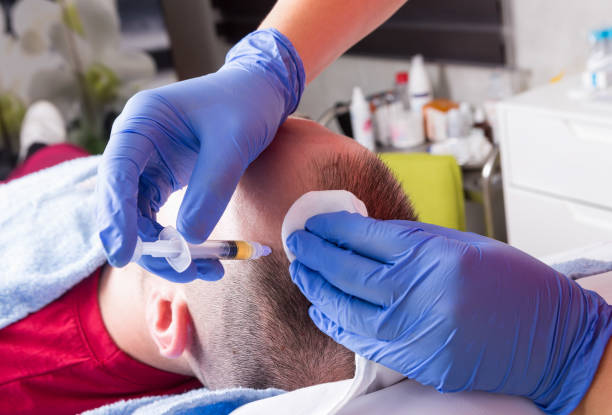
Scalp Micropigmentation: A Cosmetic Solution
Scalp micropigmentation (SMP) stands out as a revolutionary and non-invasive cosmetic hair loss treatment that offers a transformative solution for individuals grappling with hair loss challenges. This innovative procedure harnesses the power of specialized pigments to create a remarkably realistic illusion of hair follicles on the scalp, effectively addressing various hair-related concerns.
SMP emerges as an invaluable technique for those who have experienced the frustration of thinning hair or the desire to achieve the appearance of a closely cropped hairstyle. Whether you’re a man or a woman, the effects of hair loss can be distressing and take a toll on self-esteem. SMP presents an artistic and skillful approach to restoring confidence and redefining one’s self-image.
At its core, scalp micropigmentation involves precisely applying pigments to the scalp using specialized equipment. This meticulous process allows skilled practitioners to replicate the appearance of natural hair follicles with astounding accuracy. By skillfully adjusting the pigment colour to match the client’s hair and skin tone, SMP artists ensure a seamless, natural blend.
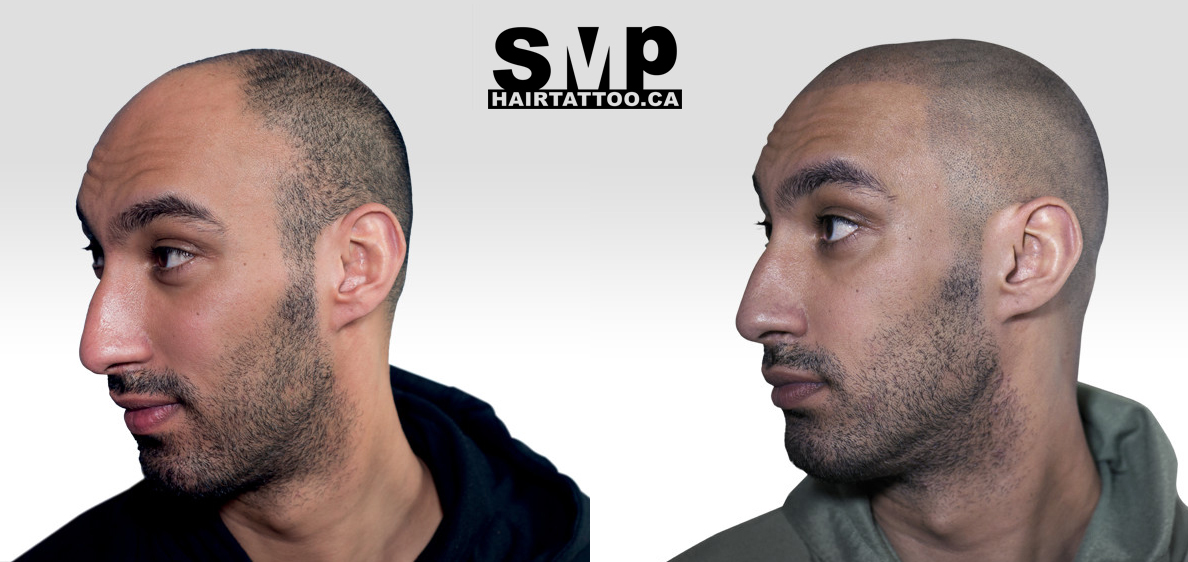

Natural Hair Loss Treatments: Exploring Essential Oils, Diet, Self-Care, and Coping
Experiencing hair loss can be a troubling situation that influences an individual’s self-esteem and overall sense of well-being. While medical and surgical treatments offer effective solutions, some people may seek natural approaches to manage hair loss. We will delve into natural treatments for hair loss, including the use of essential oils, the role of diet and supplements, self-care practices, and coping strategies to navigate the emotional challenges associated with hair loss.
Can Essential Oils Promote Hair Growth Effectively?
Essential oils have become well-liked due to their possible ability to promote hair growth. Some oils, such as rosemary, peppermint, and lavender, are believed to stimulate hair follicles and promote circulation in the scalp. While there is limited scientific evidence to support their effectiveness fully, some individuals have reported positive results when using essential oils as part of their hair care routine. It’s important to note that essential oils should be used cautiously and in diluted form to prevent skin irritation.
The Role of Diet and Supplements in Hair Loss Prevention
Maintaining a balanced diet of essential nutrients is crucial for healthy hair growth. Nutrients like vitamins (such as B vitamins and vitamin D), minerals (like iron and zinc), and protein contribute to the strength and vitality of hair. If you’re considering supplements to bridge nutritional gaps, consulting a healthcare provider is vital to determine their appropriateness for your needs.
The Importance of Self-Care in Hair Loss Management
Managing hair loss extends beyond external treatments; self-care is vital in maintaining overall hair health. Here are some self-care strategies to consider:
Stress Management
The impact of stress on hair loss arises from its ability to disrupt the natural hair growth cycle.
Stress reduction techniques like meditation, deep breathing, and mindfulness can contribute to maintaining balance and promoting hair growth.
Healthy Hair Habits to Adopt
By including healthy practices in your hair care routine, you can greatly enhance the overall quality of your hair. Opt for mild hair care products, minimize excessive heat styling, and consider the strain tight hairstyles can impose on hair follicles.
Choosing the Right Hair Products
Choosing the right hair care products is pivotal in safeguarding your hair’s health and preventing further damage. Opting for sulphate-free shampoos and conditioners is smart, as they are gentler on the hair and scalp. However, the quest for effective hair care continues beyond there; consider incorporating specialized products into your routine that are designed to nurture and support hair growth.
Reputable brands like DS Laboratories, Pharma Hermetics, and Nourkrin have established themselves as industry leaders in producing effective hair loss products. These brands offer a range of meticulously formulated solutions that harness cutting-edge technologies and proven ingredients to combat hair loss and promote hair vitality. DS Laboratories, for instance, presents a comprehensive line of products backed by scientific research, ensuring that each product addresses specific hair care concerns.
Pharma Hermetics and Nourkrin provide innovative formulations that contribute to a healthier scalp environment, improved hair strength, and a balanced hair growth cycle. By incorporating such reputable and effective products into your hair care routine, you can take proactive steps to maintain your hair’s well-being and enhance its growth potential.
Coping with Hair Loss
Hair loss can have emotional and psychological effects. Coping strategies are essential for maintaining self-esteem and overall well-being.
Getting Psychological Support
Seeking support from a mental health professional, counsellor, or social worker can help individuals navigate the emotional challenges of hair loss and build resilience.
Tips for Dealing with Hair Loss-related Self-esteem Issues
Positive self-esteem is crucial for overall mental health. Finding ways to embrace your appearance and focus on your other qualities can contribute to a positive self-image.
Conclusion: Taking the Next Steps Toward Hair Loss Treatment
Natural treatments for hair loss offer a holistic approach to addressing hair loss concerns. Integrating essential oils, maintaining a balanced diet, practicing self-care, and adopting coping strategies can improve hair health and well-being. As you explore these natural methods, it’s important to remember that individual experiences may vary. For individuals seeking comprehensive guidance, it is recommended to seek consultation with a healthcare provider or a specialist in the field of hair loss.
Preparing for Your Consultation
Before embarking on any hair loss treatment journey, it’s essential to have an initial consultation with a trichologist or hair loss specialist.
During this consultation, you’ll have the opportunity to discuss your concerns, medical history, and objectives to pinpoint the most fitting approach for your situation.
Creating a Personalized Hair Loss Treatment Plan
Based on the consultation, a personalized treatment plan can be developed that combines natural approaches, medical interventions, or both. This plan will consider your unique needs and preferences and the best action to address your hair loss concerns effectively.
Conclusion
In conclusion, understanding and addressing hair loss requires a comprehensive approach considering medical interventions and natural strategies. Each individual’s journey is unique, from the intricacies of different types of hair loss to exploring treatment options. Collaborating with a knowledgeable healthcare team or specialist is essential to develop a personalized plan that aligns with your needs and goals.
Various factors can trigger hair loss, including hormonal imbalances, genetics, and medical conditions such as cancer and central centrifugal cicatricial alopecia. In some cases, medical treatments like chemotherapy can lead to diffuse hair loss, which often affects patients undergoing cancer treatment. Understanding these risk factors and potential causes is crucial for accurate diagnosis and effective treatment.
Distinct patterns of hair loss, including male and female pattern hair loss, may manifest in diverse ways. The gradual hair thinning in specific patterns, such as receding hairlines in men or widening parts in women, are common indicators. Additionally, conditions like alopecia areata can cause sudden bald patches, leading to visible changes in appearance.
While exploring hair loss treatment options, it’s important to consider medical and natural approaches. Medications like minoxidil and finasteride have been studied extensively in clinical trials and meta-analyses. These drugs address the underlying causes of hair loss by promoting hair growth and inhibiting the effects of androgenic hormones. However, potential side effects, such as erectile dysfunction and high blood pressure, should also be considered.
Surgical interventions like hair transplants offer a more permanent solution for those seeking to restore lost hair. Techniques like follicular unit transplantation (FUT) and follicular unit extraction (FUE) involve transplanting hair follicles from areas of the body with hair, such as the scalp, to areas of thinning or baldness.
Non-surgical treatments like laser therapy, PRP, and scalp micropigmentation provide viable alternatives for those who may prefer non-invasive options. Laser therapy stimulates blood vessels in the scalp, promoting hair growth, while PRP involves using the patient’s blood to stimulate follicles. Scalp micropigmentation furnishes a cosmetic alternative by simulating the look of hair follicles on the scalp.
Coping with hair loss involves more than just physical treatments. It also requires addressing the emotional and psychological impact. Stress management, seeking psychological support, and embracing healthy self-care habits can significantly contribute to well-being during the journey.
Remember that a healthcare provider’s guidance effectively manages hair loss. Whether discussing different treatments, understanding the role of risk factors, or assessing possible side effects, a knowledgeable healthcare team can provide the necessary information to make informed decisions. Hair loss may be a complex journey, but with the right information and support, you can take steps toward regaining confidence and maintaining a positive self-image.
Q&A
What are the most common causes of hair loss?
Hair loss can result from genetics, hormonal imbalances, medical conditions, medications, and lifestyle choices.
How do medical professionals diagnose the underlying cause of hair loss?
Healthcare providers typically perform a physical examination, review medical history, and may conduct blood tests or use advanced techniques like scalp biopsies to identify the cause.
What are some effective non-surgical treatments for hair loss?
Non-surgical options include topical minoxidil, oral finasteride, and laser therapy, which slow hair loss and promote regrowth.
How does minoxidil (Rogaine) work as a hair loss treatment?
Minoxidil increases blood flow to hair follicles, extending the growth phase and potentially leading to thicker, longer hair strands.
What is the role of finasteride (Propecia) in treating hair loss?
Finasteride reduces the hormone dihydrotestosterone (DHT), associated with hair loss, effectively slowing down hair thinning.
Can stress contribute to hair loss, and how can it be managed?
Yes, stress disrupts the hair growth cycle. Meditation, deep breathing, and mindfulness can help manage stress and support hair growth.
What natural remedies and essential oils may promote hair growth?
Essential oils like lavender, rosemary, and peppermint are believed to stimulate hair follicles and encourage healthier hair growth.
How does hair transplantation work, and who is a suitable candidate for it?
Hair transplantation involves relocating healthy hair follicles to areas with thinning hair. Candidates with sufficient donor hair and realistic expectations are suitable.
What is scalp micropigmentation, and how does it offer a solution for hair loss?
Scalp micropigmentation is a non-surgical cosmetic procedure that replicates hair follicles on the scalp, creating the appearance of a fuller head of hair.
How important is a consultation with a healthcare provider before starting a hair loss treatment?
Consultation is crucial to determine the underlying cause of hair loss, receive personalized advice, and select the most appropriate treatment plan.
Book Your Free Consultation Today Or Call (647) 492-9093
Comments are closed.
